Lydd
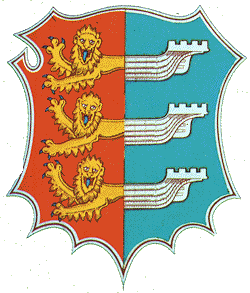

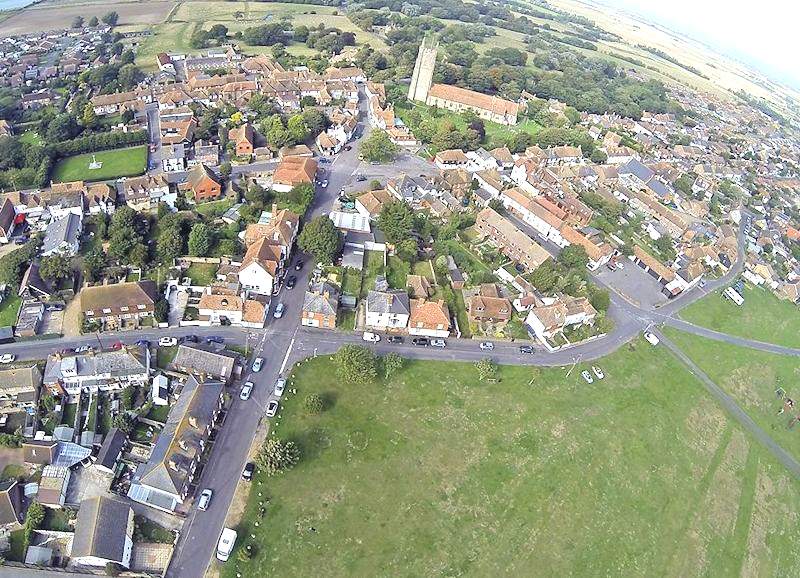
Aerial view of Lydd, with the Church in the background and The Rype in the foreground (Ack. 28)
The most southerly village in Kent, Lydd reached the height of its prosperity during the 13th century, when it was a corporate member of the Cinque Ports. Actually located on Denge Marsh, Lydd was one of the first sandy islands to form as the bay evolved into what is now called the Romney Marsh. The name Hlyda, which derives from the Latin word for "shore", was found in a Saxon charter dating from the 8th century. The parish of Lydd comprises the town of Lydd, Dungeness, Lydd-on-Sea and parts of Greatstone. Lydd is twinned with Etrechy in the Paris & Île-de-France region of France.
All Saints Church
All Saints Church, also known as Lydd Church or The Cathedral on the Marsh, belongs to the Diocese of Canterbury. All Saints is the longest parish church in Kent at 199 feet (61 m), and also has one of the tallest towers in the county at 132 feet (40 m). The church is thought to incorporate a small Romano-British basilica possibly built in the 5th century, though most of the current fabric is medieval.
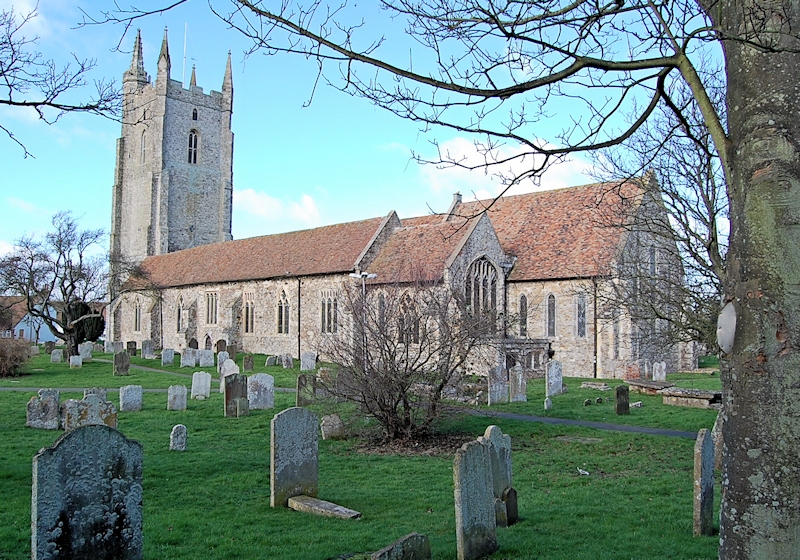
All Saints Church
The Rype
A triangular common, known as the Rype, was supposedly given to the Barons of Lydd by the Archbishop of Canterbury, in return for their having repulsed the Danes in 904. Once an area of common land now a registered village green owned by Lydd council in the centre of the town.
The Rype is host to Lydd Club Day, an annual local Carnival held on on the third Saturday of June. It was established in 1868. Apart from a brief cessation during the war years, the carnival has taken place annually ever since. The day features a funfair, boot fair in the morning, stalls and children's dressing up in the afternoon and floats in the evening.
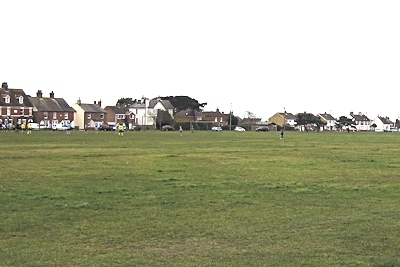
The Rype
Located in the centre of the town, Coronation Square, overlooked by All Saints Church, housed stables when it was known as Wheeler's Green. A half timbered house on the edge of the square is still know by this name. The name of the square was changed to Coronation Square in 1901 to commemorate the coronation of Edward VII. The square is also home to one of the oldest and smallest surviving timbered-framed court halls in Kent.
Lydd Town Museum
Lydd Town Museum reflects much of the history of the area and offers an interesting insight into what is a fascinating part of Kent.Museum with an excellent collection of artefacts, all having been used in Lydd in years gone by.

Coronation Square
Lydd Airport, now called London Ashford Airport, is a small local airport located just over a mile from Lydd. It mainly operates private flights but does have commercial flights to Le Touquet in France every weekend.
Planning proposals were submitted for a new terminal building and an extended runway to take up to half a million passengers a year. But its location adjacent to the nuclear power stations and nature reserves on Dungeness has caused serious concerns.
However, in April 2013 the government approved Lydd Airport’s planning application and work on a new runway and terminal building started in 2105.
History
Lydd developed as a settlement during the Romano-British period on a shingle island when the coast at the time cut off Lydd from the mainland. The settlement continued into the Saxon period, with the Saxon church using Roman materials as part of its construction.
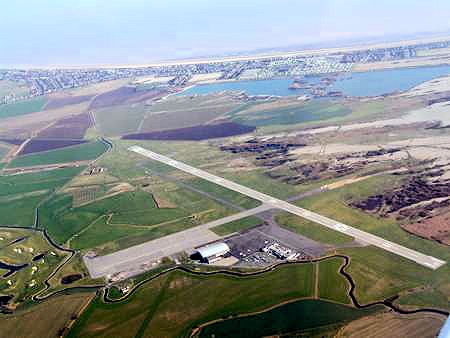
Lydd Airport




